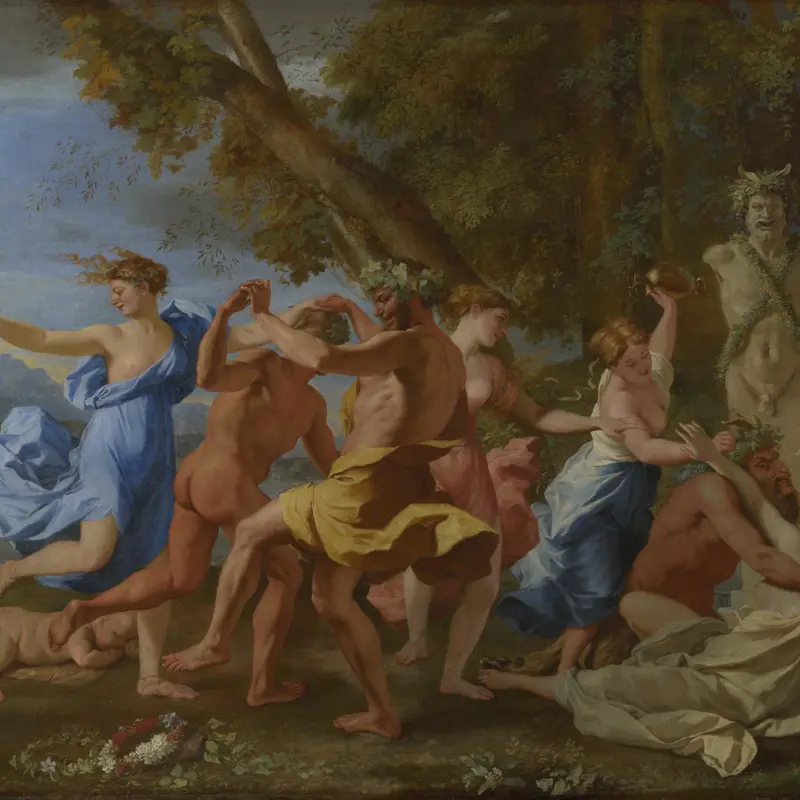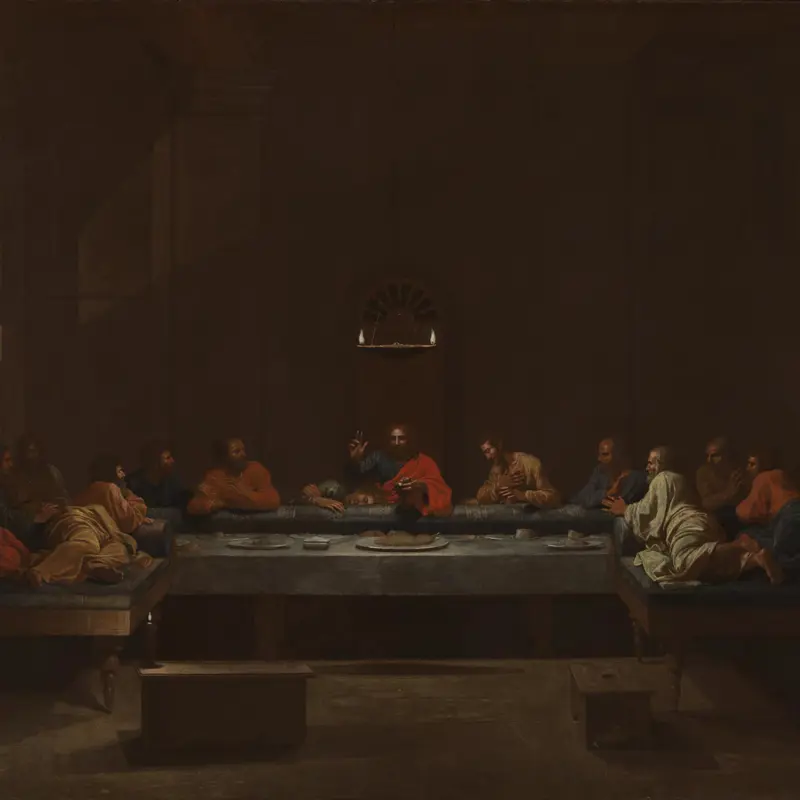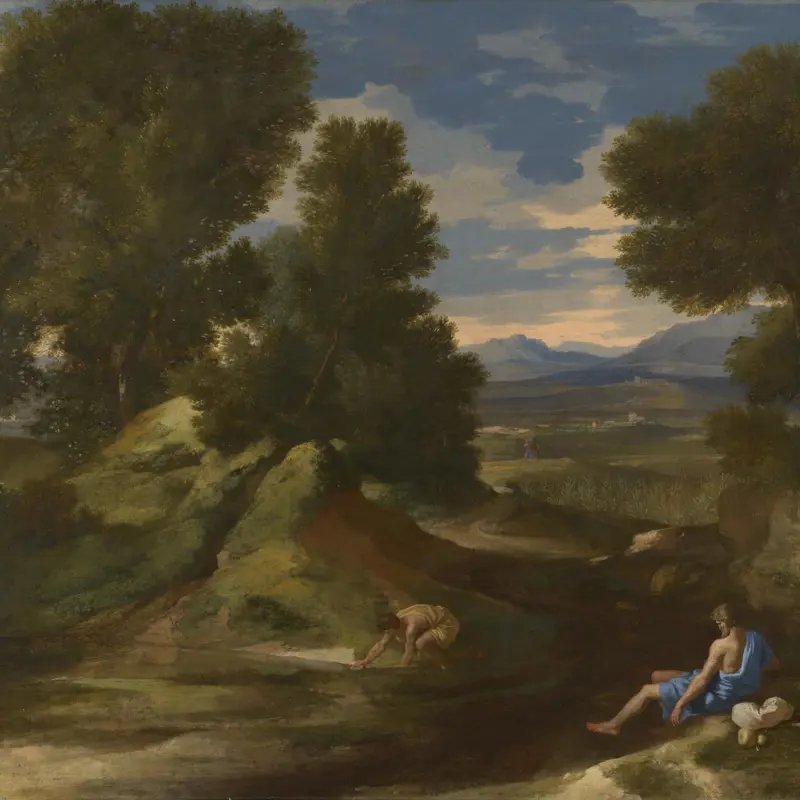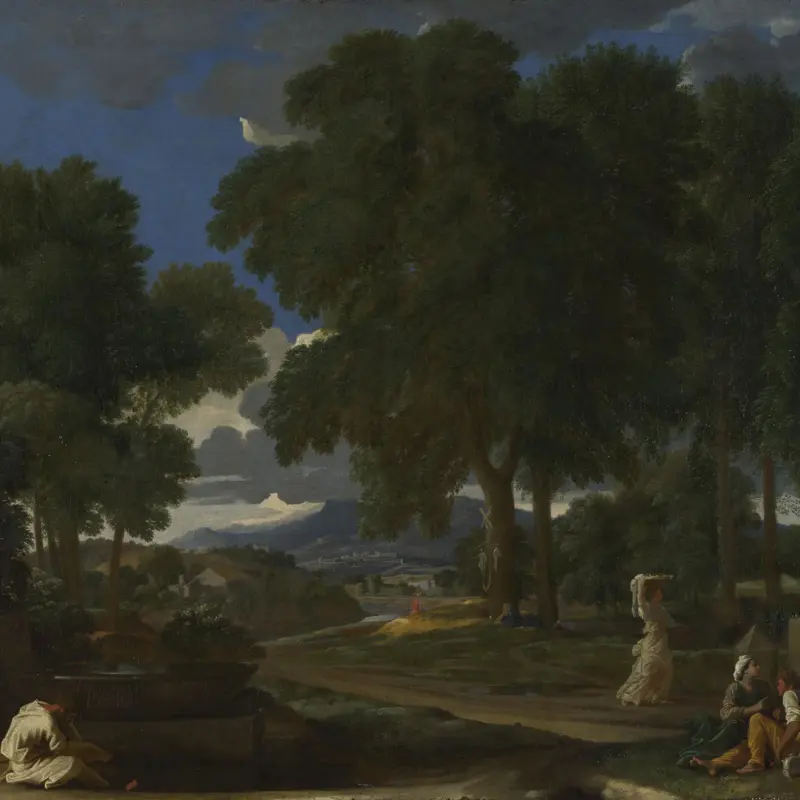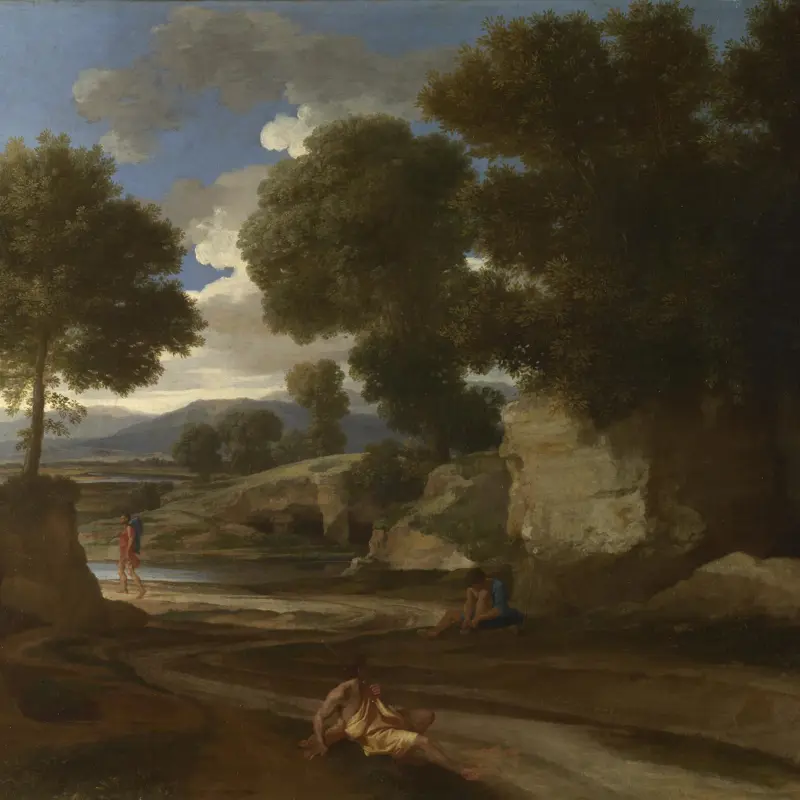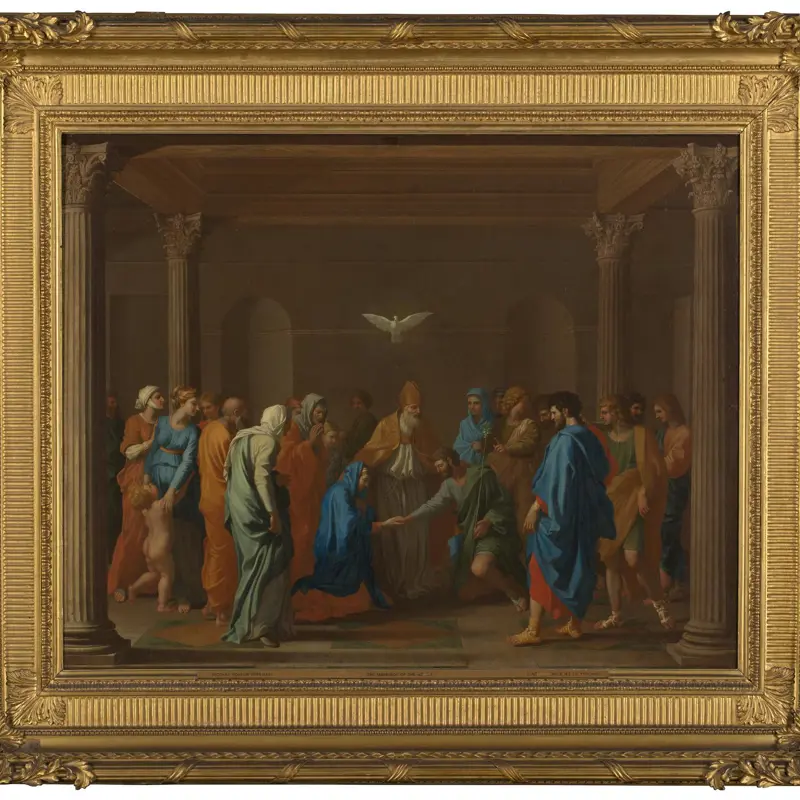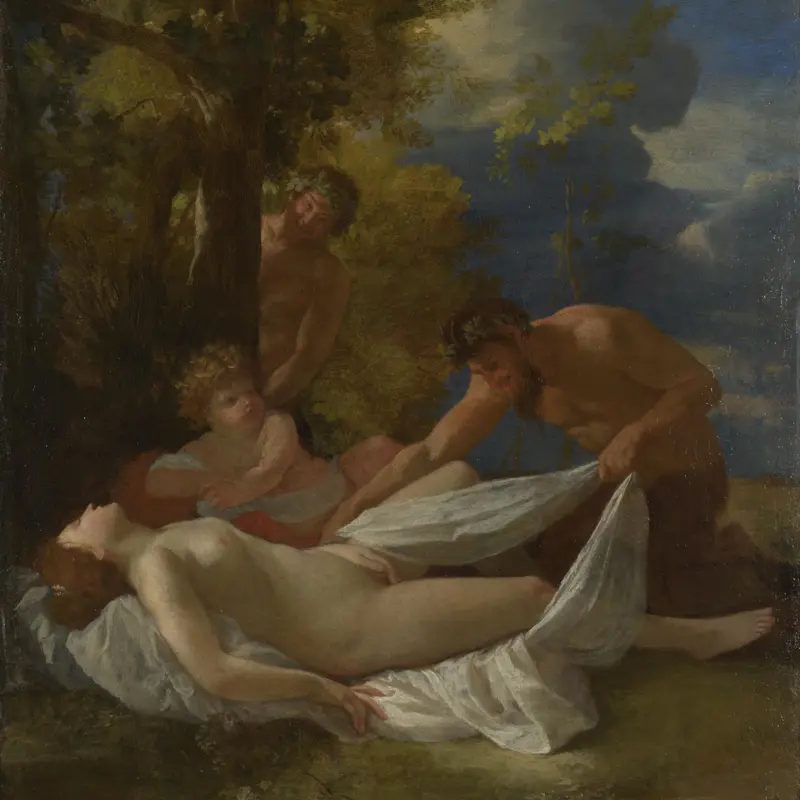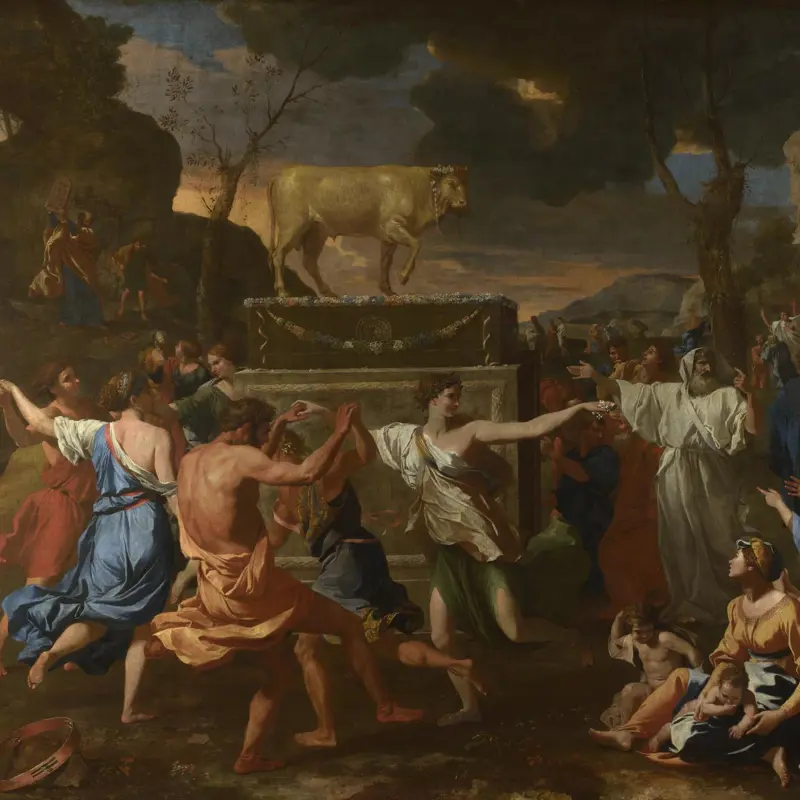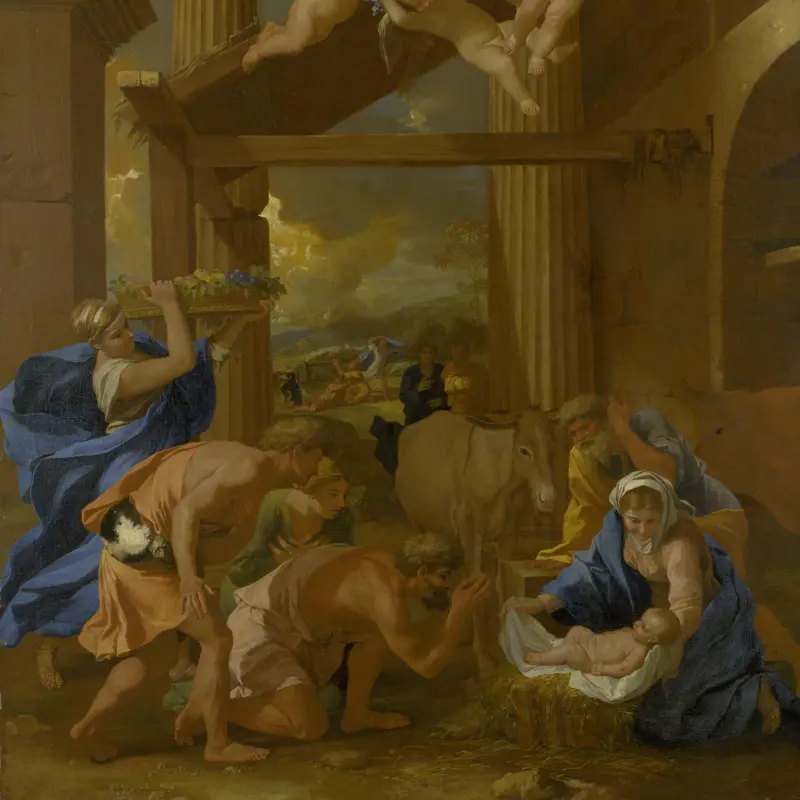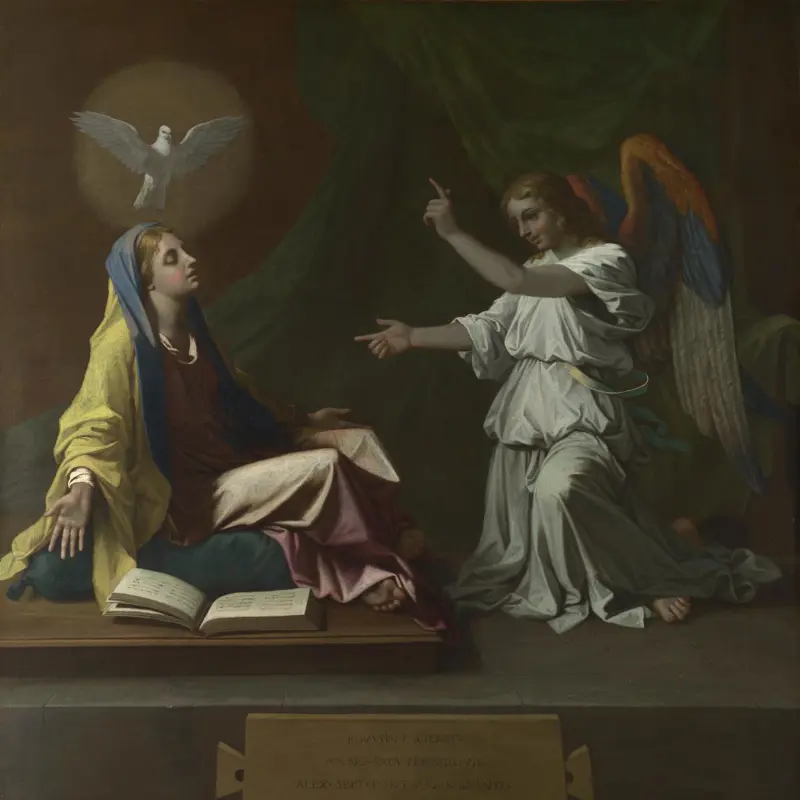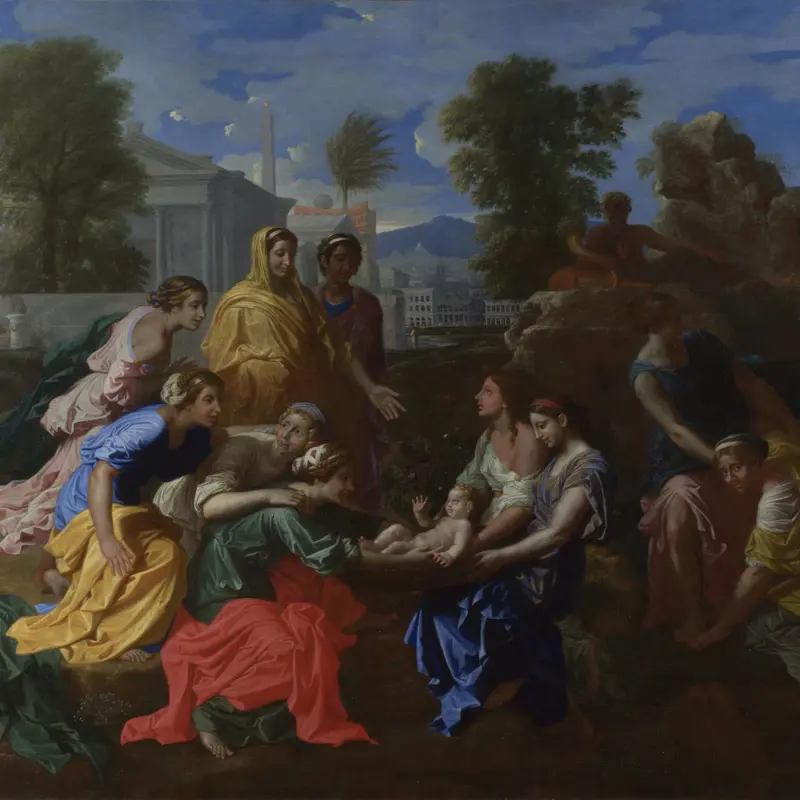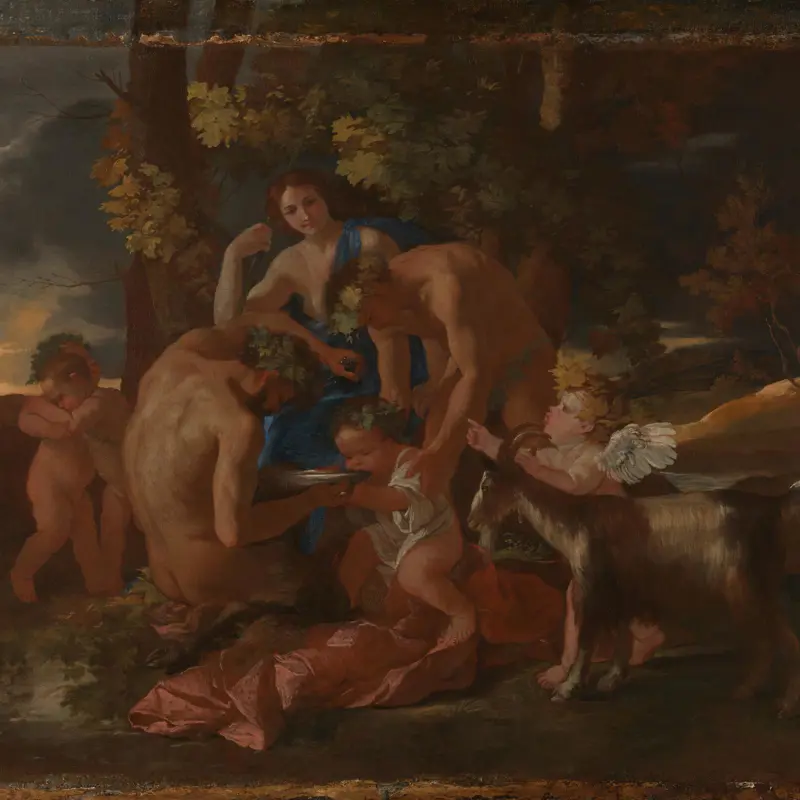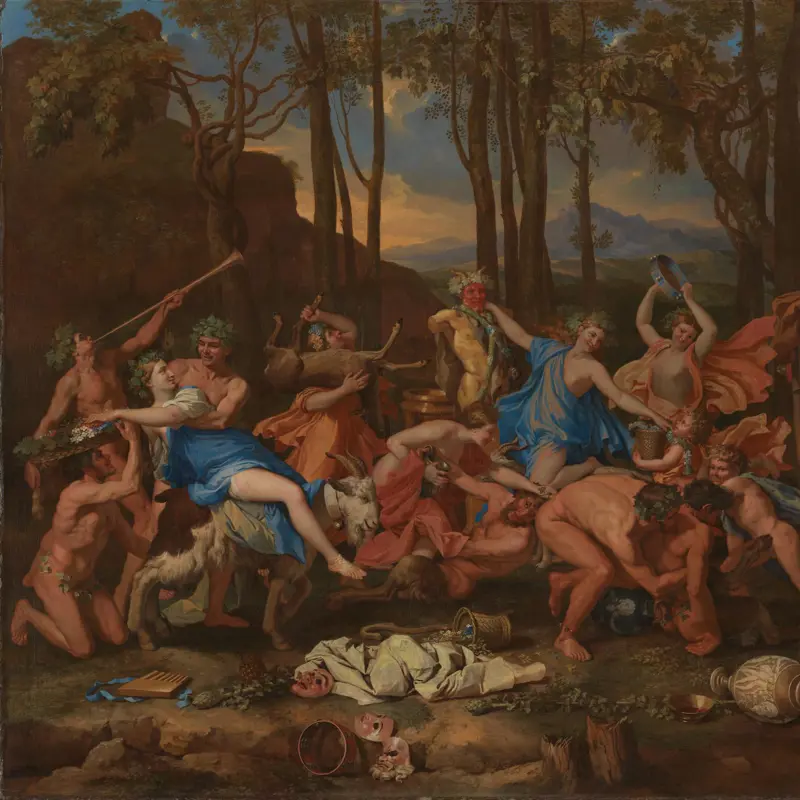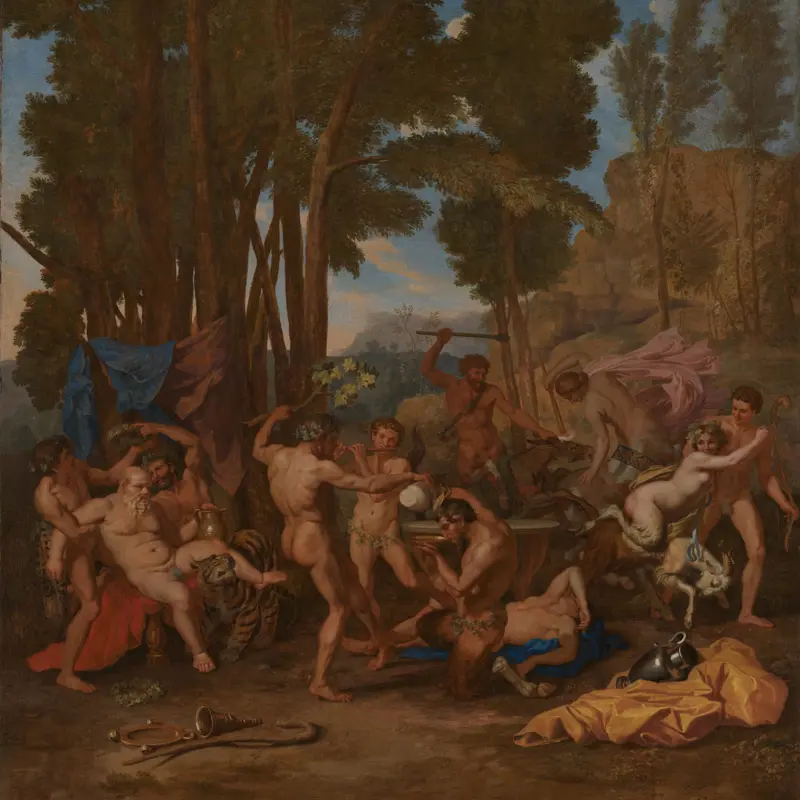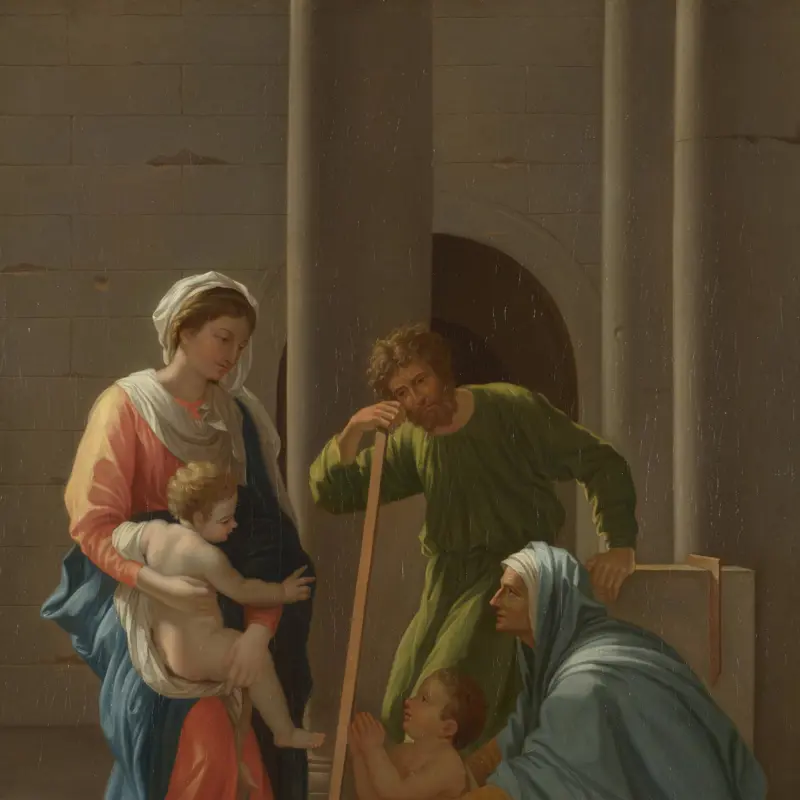Nicolas Poussin, 'Cephalus and Aurora', about 1630
About the work
Overview
Aurora, goddess of dawn, is in love with the mortal Cephalus and tries to seduce him. Cephalus, dressed here in blue, turns away from Aurora, rejecting her advances. He gazes towards a portrait of his wife, Procris, held by a winged cupid. Later, when Cephalus and Procris are reunited, they each doubt the fidelity of the other. Their story ends tragically when Cephalus accidentally kills his wife with a magic spear.
To the left of Aurora and Cephalus is a reclining river god, probably Oceanus, and beside him is the winged horse Pegasus. The background figure wearing a wreath of corn and holding flowers could be Terra, a goddess associated with the awakening earth. The faint outline of the sun god Apollo in his chariot can be seen in the vivid orange sky. These figures relate to relate to Aurora as the goddess of dawn and times of the day.
Key facts
Details
- Full title
- Cephalus and Aurora
- Artist
- Nicolas Poussin
- Artist dates
- 1594 - 1665
- Date made
- About 1630
- Medium and support
- Oil on canvas
- Dimensions
- 96.9 × 131.3 cm
- Acquisition credit
- G.J. Cholmondely Bequest, 1831
- Inventory number
- NG65
- Location
- Room 29
- Collection
- Main Collection
- Previous owners
- Frame
- 18th-century French Frame
Provenance
Additional information
Text extracted from the ‘Provenance’ section of the catalogue entry in Humphrey Wine, ‘National Gallery Catalogues: The Seventeenth Century French Paintings’, London 2001; for further information, see the full catalogue entry.
Bibliography
-
1745A.-J. Dézallier d'Argenville, Abrégé de la vie des plus fameux peintres, Paris 1745
-
1829
J. Smith, A Catalogue Raisonné of the Works of the Most Eminent Dutch, Flemish, and French Painters: In Which is Included a Short Biographical Notice of the Artists, with a Copious Description of Their Principal Pictures […], 9 vols, London 1829-1842
-
1853J.V. Cousin, 'De divers tableaux du Poussin qui sont en Angleterre et particulièment de "L'Inspiration du poète"', Archives de l'Art Français, 1853
-
1854G.F. Waagen, Treasures of Art in Great Britain: Being and Account of the Chief Collections of Paintings, Drawings, Sculptures, Illuminated Mss. […], vol. 2, trans. E. Eastlake, London 1854
-
1855C.R. Leslie, A Handbook for Young Painters, London 1855
-
1914O. Grautoff, Nicolas Poussin: Sein Werk und sein Leben, Munich 1914
-
1914E. Magne, Nicolas Poussin, premier peintre du roi, 1594-1665, Brussels 1914
-
1937L. Hourticq, La jeunesse de Poussin, Paris 1937
-
1946Martin Davies, National Gallery Catalogues: French School, London 1946
-
1946D. Mahon, 'Nicolas Poussin and Venetian Painting: A New Connection II', The Burlington Magazine, LXXXVIII/515, 1946, pp. 37-43
-
1954I. Lavin, 'Cephalus and Procris: Transformations of an Ovidian Myth', Journal of the Warburg and Courtauld Institutes, XVII/3-4, 1954, pp. 260-87
-
1957Martin Davies, National Gallery Catalogues: French School, 2nd edn (revised), London 1957
-
1960D. Mahon, 'Poussin's Early Development: An Alternative Hypothesis', The Burlington Magazine, CII/688, 1960, pp. 288-306
-
1966A. Blunt, The Paintings of Nicolas Poussin: A Critical Catalogue, London 1966
-
1969K. Badt, Die Kunst des Nicolas Poussin, Cologne 1969
-
1974J. Thuillier, L'opera completa di Poussin, Milan 1974
-
1980D. Wild, Nicolas Poussin: Band I, Leben, Werk, Exkurse, Band II, Katalog der Werke, Zürich 1980
-
1981H. MaAndrew and H. Brigstocke, Poussin: Sacraments and Bacchanals: Paintings and Drawings of Sacred and Profane Themes by Nicolas Poussin 1594-1665, (exh. cat. National Gallery of Scotland, 16 October - 13 December 1981), Edinburgh 1981
-
1985C. Wright, Poussin Paintings: A Catalogue Raisonné, London 1985
-
1986P. Sohm, 'Ronsard's Odes as a Source for Poussin's Aurora and Cephalus', Journal of the Warburg and Courtauld Institutes, XLIX, 1986, pp. 259-61
-
1987R. Wollheim, Painting as an Art, London 1987
-
1988K. Oberhuber, Poussin: The Early Years in Rome: The Origins of French Classicism, Oxford 1988
-
1990A. Mérot, Nicolas Poussin, London 1990
-
1990D. Carrier, 'Blindness and the Representation of Desire in Poussin's Painting', Res, XIX-XX, 1990, pp. 31-52
-
1994J. Thuillier, Nicolas Poussin, Paris 1994
-
1994R. Verdi and P. Rosenberg, Nicolas Poussin, 1594-1665 (exh. cat. Galeries Nationales du Grand Palais, 27 September 1994 - 2 January 1995; Royal Academy of Arts, 19 January - 9 April 1995), Paris 1994
-
1995R. White and J. Pilc, 'Analyses of Paint Media', National Gallery Technical Bulletin, XVI, 1995, pp. 85-95
-
1996E. Cropper and C. Dempsey, Nicholas Poussin: Friendship and the Love of Painting, Princeton 1996
-
1999J. Lane, '"The Dark Knight": Edward Knight of Wolverley and His Collections', Apollo, CXLIX/448, 1999, pp. 25-30
-
2001
C. Baker and T. Henry, The National Gallery: Complete Illustrated Catalogue, London 2001
-
2001H. Wine, National Gallery Catalogues: The Seventeenth Century French Paintings, London 2001
-
2001M. Bull, 'Poussin's Loves of the Goddesses', Gazette des beaux-arts, CXXXVII/143, 2001, pp. 61-70
-
2003P. Joch, Methode und Inhalt: Momente von künstlerischer Selbstreferenz im Werk von Nicolas Poussin, Hamburg 2003
-
2003C. Pace, 'Collecting French Seventeenth-Century Paintings for the Nation', Art History, XXVI/2, 2003, pp. 281-315
About this record
If you know more about this work or have spotted an error, please contact us. Please note that exhibition histories are listed from 2009 onwards. Bibliographies may not be complete; more comprehensive information is available in the National Gallery Library.

